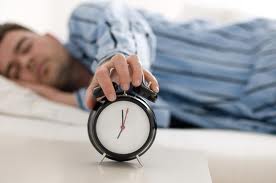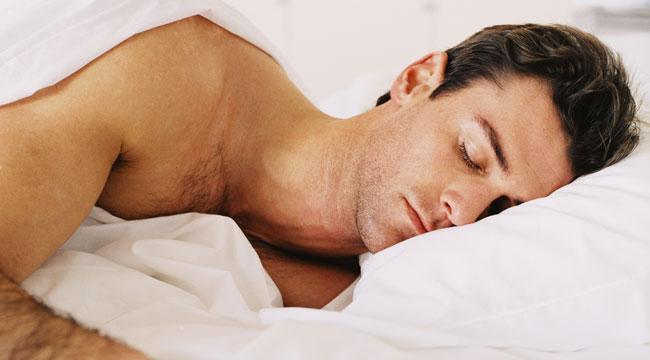 Aching after a brutal workout? Delayed-onset muscle soreness (DOMS) can make you feel the burn while your muscles recover and rebuild. But, if you take the right steps after your workout, you can go hard without paying the price. Here are 8 easy ways to prevent postworkout pain.
Aching after a brutal workout? Delayed-onset muscle soreness (DOMS) can make you feel the burn while your muscles recover and rebuild. But, if you take the right steps after your workout, you can go hard without paying the price. Here are 8 easy ways to prevent postworkout pain.
Stretch. Stretching is your first line of defense after a good workout. “When you train, you contract the muscles, and the muscle fibers get shorter,” says Steve Edwards, Head of Fitness and Nutrition Development at Beachbody®. “Lengthening them after a workout promotes mobility, and can lead to a more thorough recovery.” While fitness experts can’t seem to agree on this strategy[1]—one Australian study[2] claimed that stretching had no impact on muscle soreness—it certainly won’t hurt, especially if your flexibility is limited.
Eat for rapid recovery. In a study on “nutrient timing,” researchers found that a postworkout drink with between a 3:1 to 5:1 carb-to-protein ratio reduced muscle damage and improved recovery times[3]. A tough workout depletes blood sugar, as well as the glycogen stored in your muscles. Restoring that supply within an hour of finishing your workout is your body’s top priority. P90X® Results and Recovery Formula® is optimized with the 4:1 ratio, but in a pinch, down a glass of grape juice with whey protein powder or a glass of chocolate milk. Denis Faye, Beachbody’s Nutrition Expert, explains. “When the sugar [from the drink] rushes into your muscles to restore that supply, the protein piggybacks to jump-start the recovery process.”
Ice it. Immediately after a tough workout, icing your muscles can stave off inflammation. “Inflammation is one of nature’s defense mechanisms, but it works like a cast—it immobilizes you,” Edwards says. “When you keep inflammation down, that area is free to keep moving, and movement promotes healing.” Like stretching, its effectiveness is up for debate—some researchers have claimed that ice is only effective for injuries and not for run-of-the-mill soreness[4], but it’s a simple and safe option that many top-level athletes swear by[5]. “Unless you ice so long that you give yourself frostbite, there’s really no danger,” Edwards says. “It seems to really speed up healing without any adverse effects.”
Change your diet. “When your muscles are sore, inflammation is a huge part of the problem,” Faye says. To help reduce this inflammation, add foods that are rich in omega-3s—such as salmon, free-range meat, flax, avocado, and walnuts[6]—to your diet. The natural anti-inflammatory properties[7] of these foods can help dial back the soreness after overexertion. Amino acid supplements can also help with muscle recovery after a high-intensity workout[8].
Massage your sore spots. A recent study found that massage can reduce inflammatory compounds called cytokines[9]. One type of massage that’s gaining popularity is myofascial release, which targets the connective tissue covering the muscles. You can hit these areas yourself using a foam roller—put the roller on the floor, use your body weight to apply pressure, and roll back and forth over the sore areas for about 60 seconds. But . . . before you do, make sure you’re rehydrated and your heart rate is back to normal. “When your muscles are hot and loaded with lactic acid, you might make it worse,” Edwards says. For a more detailed tutorial on foam rolling, check out the Beachbody Tai Cheng® program.
Get heated. While ice can work wonders immediately after a workout, heat can help once your muscles have returned to their resting temperature[10]. “Heat increases circulation, especially focused heat in a jacuzzi, where you can hit areas like joints that don’t normally get a lot of circulation,” Edwards says. Just don’t jump in the hot tub immediately after a workout, because the heat can exacerbate inflammation, and the jets can pound your already-damaged muscles. Edwards cautions, “When your body heat is already high and you have a lot of muscle breakdown, sitting in a hot tub with the jets would be counterintuitive.”
Move it. You may be tempted to plant yourself on the couch until the pain subsides, but don’t skip your next workout. Circulation promotes healing, so it helps to get your heart pumping—just don’t overdo it. “Active recovery” is low-intensity exercise that gets your blood flowing without taxing your muscles. What qualifies as low-intensity? It depends on your typical workout. If you know your training zones, you can use a heart rate monitor. But, Edwards says, the easiest way to engage in active recovery is to exert around 50% of your max effort, and keep your heart rate below 140 bpm or so. Most Beachbody workout programs include a recovery workout, but if yours doesn’t, a gentle yoga class or going on an easy hike are good options.
Pop a painkiller—if you must. Nonsteroidal anti-inflammatory drugs like ibuprofen can relieve pain, but many experts aren’t sure if they’re worth the risk. “A lot of athletes call it ‘Vitamin I,'” Edwards says. But he cautions that NSAIDs can cause nasty side effects and accelerate muscle breakdown. “The only time they might help is if you’re in so much pain that you can’t do low-level exercise—you can’t get off the couch,” Edwards says. In that case, meds might help, but be careful not to overdo it—because if you’re not feeling pain, you may push too hard and cause an injury.
Resources:
[1] http://www.webmd.com/fitness-exercise/news/20071017/stretching-wont-prevent-sore-muscles?page=2
[2] http://www.sciencedaily.com/releases/2007/10/071016195932.htm
[3] http://www.utexas.edu/features/archive/2004/nutrition.html
[4] http://www.upmc.com/Services/sports-medicine/newsletter/Pages/ice-after-exercise.aspx
[5] http://well.blogs.nytimes.com/2012/02/20/really-the-claim-an-ice-bath-can-soothe-sore-muscles/
[6] http://www.webmd.com/diet/ss/slideshow-omega-3-health-benefits
[7] http://www.ncbi.nlm.nih.gov/pubmed/16531187
[8] http://www.ncbi.nlm.nih.gov/pubmed/20300014
[9] http://well.blogs.nytimes.com/2012/02/06/how-massage-heals-sore-muscles
[10] http://www.medicalnewstoday.com/releases/29108.php


 Sleep is essential for muscle repair and mass gain. Try these 6 sleep tips for bodybuilders to get a better night’s rest.
Sleep is essential for muscle repair and mass gain. Try these 6 sleep tips for bodybuilders to get a better night’s rest.